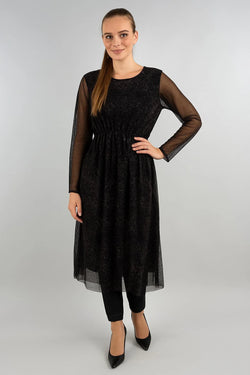The rise of independent fashion businesses across Manchester has created a clear decision point—should your boutique follow a wholesale or retail model? New clothing ventures now face faster buying cycles, shifting customer habits, and strong regional competition. This choice shapes how your business grows, manages stock, and serves its audience.
In fact, each model opens different paths. Retail gives you control, direct customer contact, and styling freedom. Wholesale offers steady volume, simpler logistics, and fewer daily demands. Many Manchester-based boutiques now explore how these models drive different results.
Let’s understand the difference in detail.
Wholesale vs Retail: What’s The Key Difference?
Wholesale sells in bulk to businesses. Retail sells one by one to customers. This is the main difference. In wholesale, you supply other retailers. They resell the products to end users. You handle larger orders, repeat clients, and fewer transactions.
For instance, a boutique orders 30 Tweed Frill Mini Dresses at once. That’s wholesale. Retail works the other way. You sell each piece to the final customer. A shopper walks into your store and buys one cheesecloth tunic. That’s retail.
-
Now, pricing follows the model. Wholesale has lower prices per unit. Retail has higher markups per item. In fact, retail margins can reach 50%, while wholesale margins usually stay around 20%.
-
Moreover, wholesale focuses on volume. Retail depends on traffic and styling. Wholesale uses B2B relationships. Retail relies on branding and display.
-
Your business systems must match the model. Wholesale uses bulk order tools and warehouse stock. Retail uses point-of-sale and in-store setups.
-
The models are not the same. They serve different buyers, use different methods, and lead to different outcomes.
Wholesale vs Retail Business Models Compared
Wholesale and retail use different systems to sell fashion, and each suits a specific type of business setup. In wholesale, you sell large quantities to trade buyers. These buyers resell the items to their own customers. You work with set pricing, volume targets, and long-term accounts.
Retail sells directly to the final customer. Each transaction is smaller, but margins are higher. You handle the sale, styling, and customer service yourself. In fact, the profit structure is one of the biggest differences. Now, think about how you handle stock. Wholesale focuses on a few strong sellers in bulk—like Italian cargo trousers or linen co-ords. Retail needs broader variety, updated trends, and seasonal changes.
Moreover, marketing differs. Wholesale uses trade shows, email linesheets, and buyer outreach. Retail depends on footfall, social content, and visual merchandising. So, choosing between the wholesale or retail model affects how you manage time, systems, and inventory. One offers scale through volume. The other offers brand control and direct sales.
Pros and Cons of Wholesale Business
Wholesale gives clothing businesses a clear way to scale. You sell in bulk, reach more stores, and move larger volumes with fewer transactions. In fact, this model works well for stock like Italian knitwear, cargo trousers, or cheesecloth tunics—items that offer consistent sizing and easy resale.
Pros:
-
Lower cost per unit–You produce or buy items in volume, reducing costs.
-
Steady demand–Repeat orders from boutique buyers improve cash flow.
-
Fewer returns—Buyers know their customers and order based on real demand.
-
Less marketing—You target trade buyers, not the general public.
-
Faster scaling—One order can move 100+ units across multiple styles.
Now, wholesale also brings clear challenges. You must manage production or sourcing at volume. Stock must be ready ahead of season. If it doesn’t sell, the cost adds up.
Cons:
-
Upfront risk—You buy or produce stock in bulk before receiving payment.
-
Inventory space—Bulk orders require storage and logistics.
-
Limited control—Once sold, you don’t manage how the product is styled or sold.
-
Slow feedback—You don’t hear from the final customer, only the buyer.
-
Credit terms—Many buyers request 30- to 60-day invoice terms.
Moreover, the pros and cons of wholesale business depend on your setup. If you have good supply chains, space to hold stock, and products that fit boutiques—like Lagenlook jumpers or frill dresses—the model works well. Wholesale suits businesses ready to build B2B relationships, manage volume, and sell across regions, not just over the counter.
Pros and Cons of Retail Business
|
Pros |
Cons |
|
Higher profit per item |
Higher overhead costs |
|
You set retail prices and keep full margin. |
Rent, staff, marketing, and utilities add up. |
|
Direct customer control |
Slower volume movement |
|
You manage product display, service, and brand. |
Stock sells one piece at a time. |
|
Stronger brand presence |
More daily tasks |
|
Build loyalty through styling, packaging, and service. |
You handle sales, returns, and floor changes. |
|
Instant feedback |
More marketing needed |
|
See what sells and adjust quickly. |
Retail depends on promotions and footfall. |
|
Creative freedom |
Stock risk increases |
|
You style rails, test edits, and control visuals. |
Unsold items tie up space and cash. |
Now, the retail business benefits for beginners include control, faster feedback, and local brand growth. But each benefit comes with more hands-on work. Retail suits boutique owners who enjoy customer-facing roles, styling, and direct sales, especially in areas like Didsbury or Altrincham where foot traffic supports visual retail.
How to Choose The Right Model For Your Boutique?
If you are choosing between wholesale and retail, it depends on how your boutique operates, who your customers are, and how you plan to grow. In fact, your decision affects stock flow, space use, cash cycles, and how you spend your time each day.
Now, ask yourself a few key questions:
-
Do you enjoy building direct customer relationships?
If yes, retail gives you full control over service, styling, and sales. -
Do you prefer working behind the scenes, focusing on volume?
Wholesale lets you supply others and scale without daily sales tasks. -
Do you have space to hold bulk stock?
Wholesale needs room for storage and fulfilment. -
Do you have time for visual merchandising and walk-in sales?
Retail needs daily attention—especially if you manage a physical store. -
Is your product suitable for resale by others?
Items like linen co-ords, frill tunics, and one-size jumpsuits work well in wholesale due to flexible sizing and wide appeal.
Moreover, consider your location. Boutiques in Greater Manchester’s retail hubs—like Deansgate or Altrincham—benefit from retail’s branding potential. Areas with less footfall may suit wholesale better, especially if you already supply other stores. So, the right model fits your resources, your strengths, and your stock. Some boutique owners start with retail to build a local name, then add wholesale once demand grows.
Others begin with wholesale and test retail through pop-ups or online shops. Both paths are valid—as long as your structure supports them.
Hybrid Models: Is It Possible to Do Both?
Your business model shapes how you manage stock, handle sales, and interact with buyers. The right choice depends on what you sell, how you work, and where your boutique is based.
Wholesale fits when:
-
You want to move large quantities at once.
-
You work well with structured systems and repeat buyers.
-
You have reliable access to styles like Lagenlook dresses or cotton tunics that suit trade clients.
Retail fits when:
-
You enjoy direct selling and daily customer interaction.
-
You want full control over pricing, styling, and branding.
-
You focus on visual presentation and trend rotation.
Product type also guides the choice. Core items with broad appeal—like oversized knitwear or tie-dye sets—perform well in wholesale. Seasonal edits or one-off trend pieces fit better in retail where you control how they’re styled and sold.
Location plays a role. A boutique near Didsbury or Deansgate benefits from steady foot traffic, supporting a retail-first approach. Warehouses or fulfilment hubs outside city centres support wholesale operations more efficiently.
Use your resources, goals, and buyer habits to decide. One model offers scale and order flow. The other offers brand depth and personal engagement. Pick the one that aligns with your boutique’s structure and growth plan.
Final Guidance for Manchester Boutique Buyers
Manchester’s boutique scene rewards clear planning. You need a model that matches how your customers shop and how your stock moves. Wholesale suits those who prioritise scale, repeat orders, and streamlined stock flow. Retail suits boutiques that thrive on personal curation, foot traffic, and styling control. Many shops in Greater Manchester blend both. Wholesale supports bestsellers like Italian cotton co-ords. Retail drives loyalty through seasonal drops and styled displays.
Your final decision depends on pace, location, and buyer habits. You have to use local insight, stock data, and your business goals to guide the path. Each model leads to growth when used with focus and consistency.
Partner With Milan Clothing For Trusted Wholesale Supply
Milan Clothing supports independent fashion retailers with consistent, high-quality Italian stock. Every piece is made to fit UK sizes 8–20, offering wearable styles that perform well across rails, lookbooks, and repeat orders. Retailers in Greater Manchester—especially in areas like Didsbury, Altrincham, and Deansgate—choose Milan Clothing for its proven sell-through and low-return rates. Our wholesale collections include bestselling lines such as soft cotton cheesecloth tunics, stretch-waist Italian trousers, and seasonal showpieces like the Sequin Heart Jumper or Tweed Frill Mini Dress.
Our sourcing is transparent. Each item is selected directly from Italian workshops that understand what British buyers need: flattering fits, premium fabrics, and strong commercial appeal. See, from everyday Lagenlook edits to event-ready drops, our stock helps you style confidently and buy with purpose. Explore the latest wholesale collections and build a partnership that delivers lasting value for your boutique.
Get Register Now.


